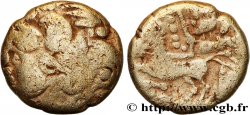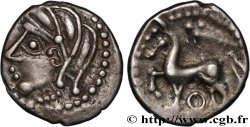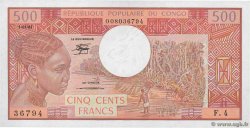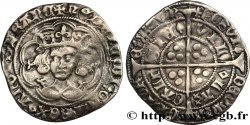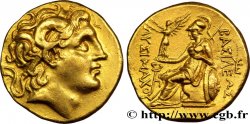Live auction - bga_379162 - GALLIA - BITURIGES CUBI (Area of Bourges) Potin au bucrane et au cheval
Чтобы принять участие в торгах, вы должны войти в систему и стать подтвержденным участником аукциона. Войдите, чтобы сделать ставку. Ваш аккаунт будет подтвержден в течение 48 часов. Не ждите до закрытия торгов, чтобы зарегистрироваться.Сделав ставку на данный товар, вы вступаете в юридическое соглашение на покупку выбранного товара и нажатием кнопки «Сделать ставку» подтверждаете принятие вами условий интернет-аукционов cgb.fr.
Ставка может бить сделана только в полном эквиваленте евро. Торги закроются согласно времени, указанному в описании товара, все ставки, сделанные после закрытия торгов, учитываться не будут. Не следует откладывать предложение вашей ставки до последнего момента, так как система может не успеть обработать вашу заявку, и ваша ставка не будет принята. Более детальную информацию вы найдёте здесь: FAQ по интернет-аукционам.
Все ставки победителей подлежат комиссии 18%.
Все ставки победителей подлежат комиссии 18%.
| Оценить : | 600 € |
| Цена : | 260 € |
| Максимальная предлагаемая цена : | 280 € |
| Конец торгов : | 01 March 2016 15:26:47 |
| Участников : | 2 Участников |
Тип Potin au bucrane et au cheval
Дата: Ier siècle avant J.-C.
Металл: potin
Диаметр: 19,5 mm
Ориентация осей монеты: 3 h.
Вес: 2,75 g.
Редкость: R3
Комментарии о состоянии
Potin exceptionnel, avec de beaux reliefs pour ce type. Patine sombre et brillante, sur un flan un tout petit peu irrégulier
Лицевая сторона
Аверс: легенда: ANÉPIGRAPHE.
Аверс: описание: Bucrane accosté de deux esses, une croisette entre les cornes ; un grènetis en descendant d’une corne à l’autre et bourrelet périphérique.
Обратная сторона
Реверс: легенда: ANÉPIGRAPHE.
Реверс: Описание: Cavalier (?) à gauche ; grènetis perlé et bourrelet périphérique.
Комментарий
Ce potin est très rare ; seulement connu par un exemplaire au musée de Zurich et de très rares en collections privées, c’est la seconde fois que nous le proposons à la vente après le bga_364110 de CELTIC 9 et nous n’en avons jamais vu passer d’autre en catalogues !
Le prototype du droit est clairement le potin des Rèmes au bucrane, lui-même inspiré du rare sesterce de Caius Antius Restio frappé vers 45 avant J.-C. Le revers au cheval n’a rien à voir avec l’ours du potin des Rèmes.
Le cavalier supposé n’est pas visible sur le n° 275 de Zurich (lui-même repris en dessin par A. Gaumann pour son n° 176). Le n° 24.5 de H. Patat correspond à notre monnaie, mais le cavalier pourrait n’être qu’une interprétation à partir de globules qui auraient fusé entre eux....
This potin is very rare; only known from a example in the Zurich museum and very rare ones in private collections, this is the second time that we are offering it for sale after bga_364110 from CELTIC 9 and we have never seen another one appear in catalogs ! The prototype of the law is clearly the Remi potin on the bucrane, itself inspired by the rare sestertius of Caius Antius Restio struck around 45 BC. The reverse on the horse has nothing to do with the bear of the potin of the Remes. The supposed rider is not visible on number 275 of Zurich (itself used in drawing by A. Gaumann for his number 176). No. 24.5 by H. Patat corresponds to our coin, but the rider could only be an interpretation based on globules which would have merged between them...
Le prototype du droit est clairement le potin des Rèmes au bucrane, lui-même inspiré du rare sesterce de Caius Antius Restio frappé vers 45 avant J.-C. Le revers au cheval n’a rien à voir avec l’ours du potin des Rèmes.
Le cavalier supposé n’est pas visible sur le n° 275 de Zurich (lui-même repris en dessin par A. Gaumann pour son n° 176). Le n° 24.5 de H. Patat correspond à notre monnaie, mais le cavalier pourrait n’être qu’une interprétation à partir de globules qui auraient fusé entre eux....
This potin is very rare; only known from a example in the Zurich museum and very rare ones in private collections, this is the second time that we are offering it for sale after bga_364110 from CELTIC 9 and we have never seen another one appear in catalogs ! The prototype of the law is clearly the Remi potin on the bucrane, itself inspired by the rare sestertius of Caius Antius Restio struck around 45 BC. The reverse on the horse has nothing to do with the bear of the potin of the Remes. The supposed rider is not visible on number 275 of Zurich (itself used in drawing by A. Gaumann for his number 176). No. 24.5 by H. Patat corresponds to our coin, but the rider could only be an interpretation based on globules which would have merged between them...








 Cообщить об ошибке
Cообщить об ошибке Распечатать страницу
Распечатать страницу Отправить мой выбор
Отправить мой выбор Задать вопрос
Задать вопрос Consign / sell
Consign / sell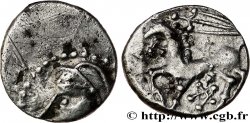
 Информация
Информация